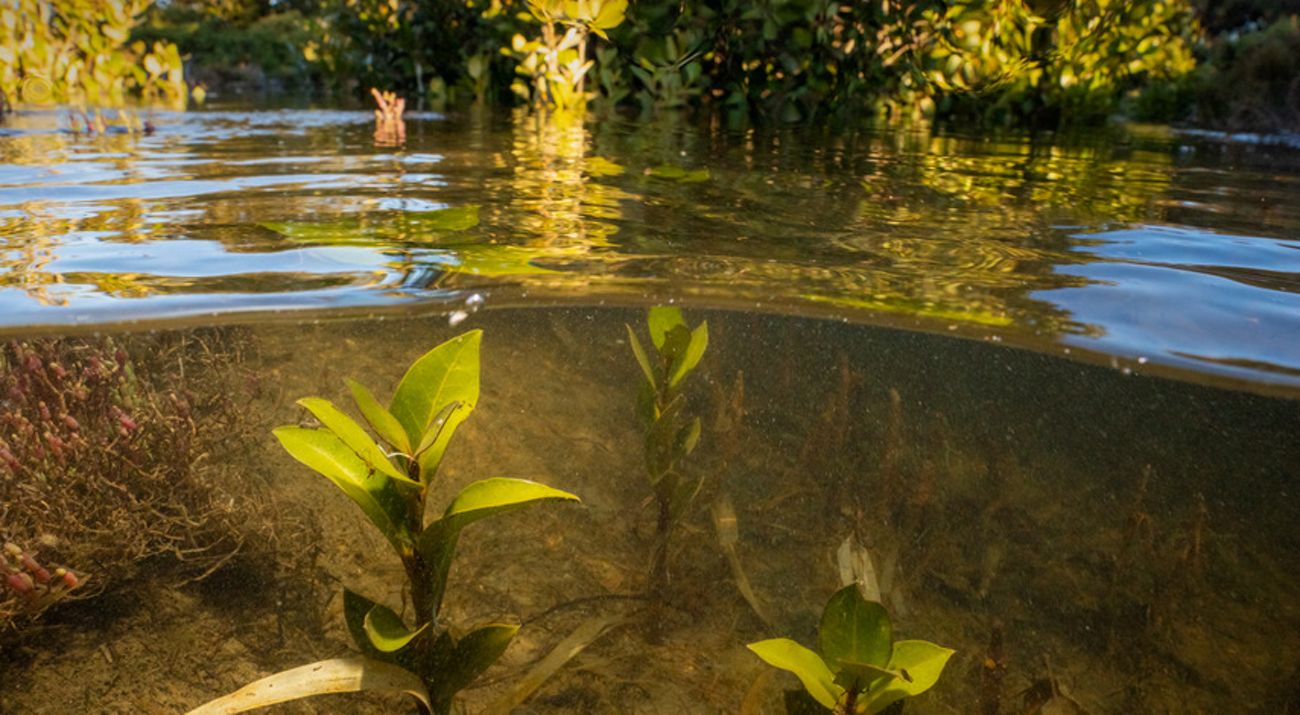The South Australian Blue Carbon Ecosystem Restoration Project
Fighting climate change and advancing the blue carbon economy with South Australia's coastal wetlands
The Australian Government’s Department of Climate Change, Energy, the Environment and Water has granted $2.9 million to advance the South Australian Blue Carbon Ecosystem Restoration Project, led by The Nature Conservancy Australia (TNC).
This funding will support TNC and our partners to expand coastal restoration across 12,400 hectares of carbon rich wetlands including mangroves and saltmarsh habitats, located 50 km north of Adelaide within the Adelaide International Bird Sanctuary.
Partners include Kaurna as the traditional owners, the South Australian Department for Environment and Water, Adelaide Plains Council, Flinders University, The University of Adelaide, Birds SA, BirdLife Australia, the Northern and Yorke Landscape Board and Green Adelaide.
Blue carbon is a critical strategy
The concept of blue carbon — the carbon stored in coastal ecosystems — is gaining traction worldwide as a critical strategy for mitigating climate change. Mangroves, seagrasses, and saltmarshes span vast stretches of coastlines globally, absorbing and storing carbon at concentrations up to four times higher than terrestrial forests and retaining it in sediment for millennia, offering a long-term natural solution to climate challenges.
Despite their significance worldwide, coastal wetlands are rapidly disappearing due to conversion for agriculture, aquaculture and urban development.
A project that will deliver benefits
TNC’s new project aims to restore natural tidal flows into a stranded wetland, improving both the ecological health and extent of these local ecosystems and protecting the coastline against climate change impacts.
Increased blue carbon storage not only yields climate and biodiversity benefits but also opens up new revenue streams for local farmers and Indigenous communities through participation in the growing carbon market.
Restoration efforts extend across the adjacent public and private properties including project partners undertaking Kaurna cultural heritage management, revegetation, weed management and pest animal control activities to safeguard this internationally significant area from threats.
A model for future blue carbon projects around the world
TNC has developed a comprehensive monitoring, evaluation and learning framework for the project, collaborating with university partners to measure improvements using before and after restoration surveys.
In addition, Flinders University leads a research consortium tasked with examining the project’s environmental and socio-economic benefits, developing cost-effective methodologies for assessing these benefits within an Environmental Economic Accounting framework.
Stella Kondylas, Blue Carbon Lead at TNC Australia emphasises the national biodiversity significance of this coastline “South Australia’s coastal wetlands provide homes for many plants and animals as well as provide vast opportunities to advance a blue carbon economy and help mitigate climate change. Around the world, we’re seeing just how important these ecosystems are to reducing emissions and protecting coastal communities who are among the most vulnerable to climate impacts."
Quote: Stella Kondylas
This project can serve as a model for future blue carbon projects—here in Australia, and on the global stage.
The project area provides critically important habitat for many Australian and migratory shorebirds. Around 15,000 migratory shorebirds gather here for up to six months each year before migrating to breeding grounds in China, Siberia and elsewhere in East Asia. Expanding habitat availability for these birds will strengthen global conservation efforts along one of the world’s three major migratory bird flight paths.
This latest funding announcement, builds upon substantial contributions from corporate donor Smartgroup, as well as philanthropic organisations COmON Foundation in Europe and the Bezos Earth Fund in the United States.
The Nature Conservancy is at the forefront of blue carbon science in Australia.
Read more:
